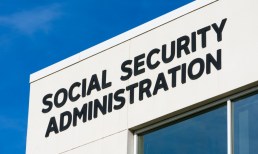Tim Hortons: Loyalty Programs Open Customer Channel Beyond the Restaurant

For Tim Hortons, loyalty innovations are leading to record-strong digital performance.
The Restaurant Brands International-owned, Toronto-based coffeehouse and quick-service restaurant (QSR) chain saw its highest digital mix yet in its home market, per an earnings call Tuesday (Feb. 15) discussing the company’s fourth-quarter 2021 results, with online channels generating a third of sales. Executives attributed this success in large part to loyalty initiatives.
Read more: Tim Hortons Touts Record-High Digital Mix in Canada
Tim Hortons Canada Senior Director of Digital and Loyalty Sales Ernest Choi at and Allison Matheson, who occupies the same position at Tim Hortons U.S., discussed in an interview with PYMNTS the ways the Tims Rewards program contributes to the digital and omnichannel growth of the brand.
“Through loyalty, we’ve been able to see our guests through a different lens,” said Choi. “By understanding the individual guest’s participation in the loyalty program and purchasing behaviors better, we’ve started engaging them better — by connecting with them through personalized [customer relationship management (CRM)] and offers. We see personalization going beyond just the experience in the mobile app and into our restaurants, which gives our guests an omnichannel digital experience.”
Loyalty programs are key to reaching a large share of today’s restaurant customers, according to data from the most recent edition of PYMNTS’ Digital Divide study, “The Digital Divide Report: Technology As A Catalyst For Restaurant Purchases,” created in collaboration with Paytronix. The study, which drew from a census-balanced survey of more than 2,400 U.S. adults, noted that 39% of restaurant customers said that rewards programs would encourage them to make more purchases.
See more: How Eateries Can Tap Order Throttling Tools as Delivery Demand Grows
South of the Border
In the U.S., the program is not as far along yet.
“The Tims U.S. market is a little earlier on its Tims Rewards journey, but we’ve benefitted so much from the learnings in Canada, and we’re now leveraging the experiences there to drive our focus on bringing new guests into the program and winning long-term loyalty,” Matheson said.
Loyalty programs have certainly caught on in the country. Findings from PYMNTS and Paytronix’s January study, “The Digital Divide Report: Minding The Loyalty Gap,” which drew from a survey of 2,414 U.S. adults, noted that 61% of respondents had earned loyalty rewards for their spending in the previous 30 days. Additionally, more than half of all consumers in their early 40s and below reported being members of loyalty programs.
Read more: Restaurants Compete to Make Loyalty Programs Stand out as Consumers Join Multiple Programs
Matheson noted that the loyalty program provides insight on U.S. consumers’ behaviors, informing the Tim Hortons’ overall business strategy, with the company “continuously learning how loyalty data can have impact on the entire … experience.” For instance, these data “help inform the development of new products.”
Weathering the Storm
One of the advantages of loyalty programs for restaurant brands is that they provide much-needed support at times when customers outside of this digital ecosystem are pulling back.
“During the pandemic, we’ve seen loyalty help soften the impacts of mobility in regions where that was a bigger factor,” said Choi.
His remarks echo those of Paytronix CEO Andrew Robbins, who noted in an interview with PYMNTS’ Karen Webster that, during the early months of the pandemic, total restaurant occasions were down about 70%. However, loyalty members only reduced their frequency by around 20%.
“Digital engagement mechanisms to keep close to the guests are paramount,” Robbins said. “So, a strong loyalty CRM program, online ordering, those are the twin pillars of a good strategy. And we see this every single time there’s a downturn.”
See more: Restaurants Lean on Loyal Customers to Navigate Omicron, Inflation Impact
A Tailor-Made Experience
Looking ahead to the future of loyalty, Choi predicted, “Growth of personalization and making the program more relevant to the individual guests will continue to be big [trends].”
Consumers seek out this kind of personalization, according to data from the August edition of PYMNTS and Paytronix’s Delivering On Restaurant Rewards report. The study, which drew from a census-balanced survey of more than 2,000 U.S. consumers regarding their loyalty habits, found that 66% considered the availability of customized coupons or discounts when deciding whether to sign up for loyalty programs, and that share jumped up to 72% for QSRs’ programs.
Read more: Two-Thirds of Consumers Find Restaurant Rewards Impersonal
“Another trend we’ve started to see is cross-industry partnerships,” Choi added.
One example of such a cross-industry initiative would be competitor Starbucks’ partnership with Air Canada that launched in March, by which the airline’s rewards members are able to “double-dip” on rewards, earning loyalty points for both the airline and the coffeehouse with purchases at participating Starbucks locations.
See more: Starbucks Looks to Double-Dip Loyalty With Blockchain-Enabled Cross-Brand Rewards
Within five years, Choi predicted restaurants will be “able to interact with guests more and more outside of the restaurant transaction, whether it’s community, partnerships or entry into cross-industries. A loyalty program gives many brands the right to expand their ecosystem while providing additional value and experiences to the guest.”



